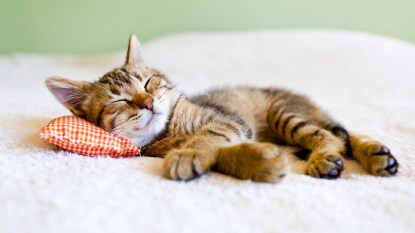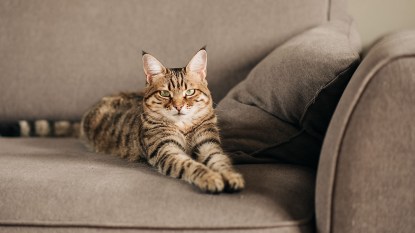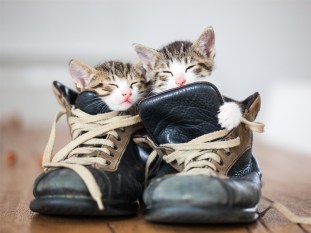What Human Foods Can Cats Eat? Vet Shares the Best Picks + 9 You Should Always Avoid
Plus, the 80/20 rule that will keep your cat happy and healthy
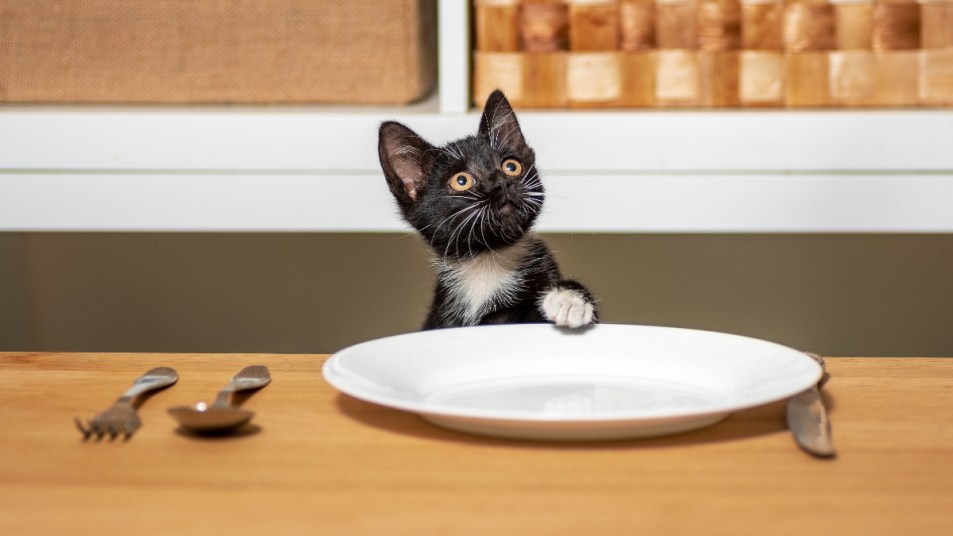
Dogs aren’t the only pets who can get curious about dinner table offerings! Your feline friend may also take an interest in your meals now and then. But what human foods can cats eat? We asked veterinarians, and they say it’s perfectly fine to share some of your bounty, with some cautions. “Adding a healthy human food topping to your cat’s regular diet is not only okay, it’s actually beneficial when done properly,” explains Preston Turano, DVM, veterinary spokesperson at Felix Cat Insurance. Keep reading to find out what human foods your cat can eat and which ones are big no-nos.
What to know about feeding cats human food
Before you think about giving your cat some of your food, it’s important to make sure it’s safe for her to eat. Below, you’ll find vet-approved answers to what human foods can cats eat as well as advice on how best to share and which foods to avoid.
Feed in small amounts
Though it’s acceptable to share certain foods with your kitty, it’s best not to make it her primary source of nutrition. “Healthy human food toppings can be added daily in moderation as a supplement to their regular, balanced diet,” says Dr. Turano. “A good rule of thumb is to keep at least 80% of the diet their regular balanced cat food and at most 20% a human food topping.”
If you’re unsure of how much to share with your furry friend, contact your veterinarian. They can give you a better idea of how many calories your cat should be consuming based on size, weight, metabolism rate and activity level.
Related: What To Do When Your Cat Just Won’t Eat: Top Vets Weigh In
Opt for lean meats
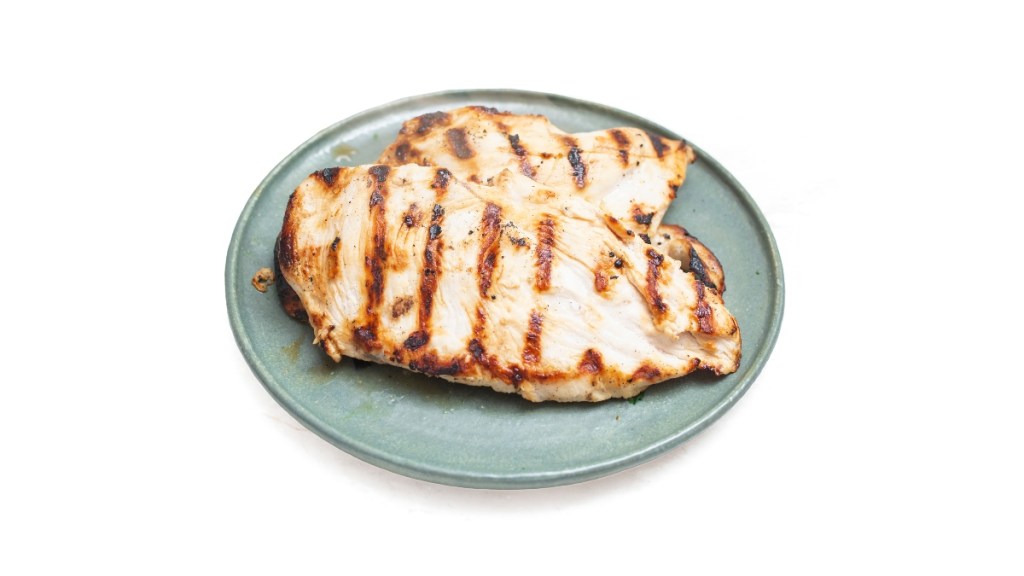
In general, it’s okay to let Whiskers have a taste if she’s interested in your meaty dinner. “Cats are carnivores, and adding a lean fresh protein treat will only benefit their health and nutrition,” shares Dr. Turno. After all, kitties’ systems are designed for digesting high-protein, low-carb foods.
It’s best to choose meats that are low in fat, like lean ground beef, chicken or turkey. You’ll also want to avoid anything breaded, fried or heavily seasoned. “You can add cooked or deli meats in small portions as toppings to their regular meal,” he shares. Just clean your cat’s bowl extra well after, however, to avoid a build up of bacteria. (Click through for vet advice on how often to clean your pet’s food bowl.)
One important note: Be sure not to give your cat any meat that’s still on the bone. Those fragments could be swallowed and lead to choking, indigestion or even infection.
Skip the produce
Some kitties may try and nibble on a pea or piece of lettuce that drops on the floor. Though nontoxic for cats, there’s no need to make cat-friendly veggies a regular part of their meals. The reason? They don’t provide much nutritional benefit!
“Cats are carnivores, and it is best to use a balanced cat food and healthy human food toppings that align with a carnivorous diet,” explains Dr. Turano. “If you would like to consider other options, it is best to consult your local veterinary team when considering any other type of diet.”
Related: Can Dogs Have Blueberries? Vets Weigh In On What ‘People Food’ Is Safe For Dogs
Avoid foods that can cause an upset stomach
Any dish that contains butter or milk could potentially cause diarrhea if your cat is lactose intolerant (as many of them are). Avoid ham and other pork products as well, since they can cause vomiting and diarrhea. Plus, pork tends to be a fattier meat and can pack a whole bunch of unnecessary calories into a kitty’s diet — even in small amounts.
However, all cats are different, and what one cat’s digestive system can handle may be different for another. “Vomiting or diarrhea can occur when changing or adding new foods, thus it is best to discuss with your veterinary team your cat’s dietary needs and whether adding certain human food toppings would benefit your cat,” advises Dr. Turano.
Keep calories in mind
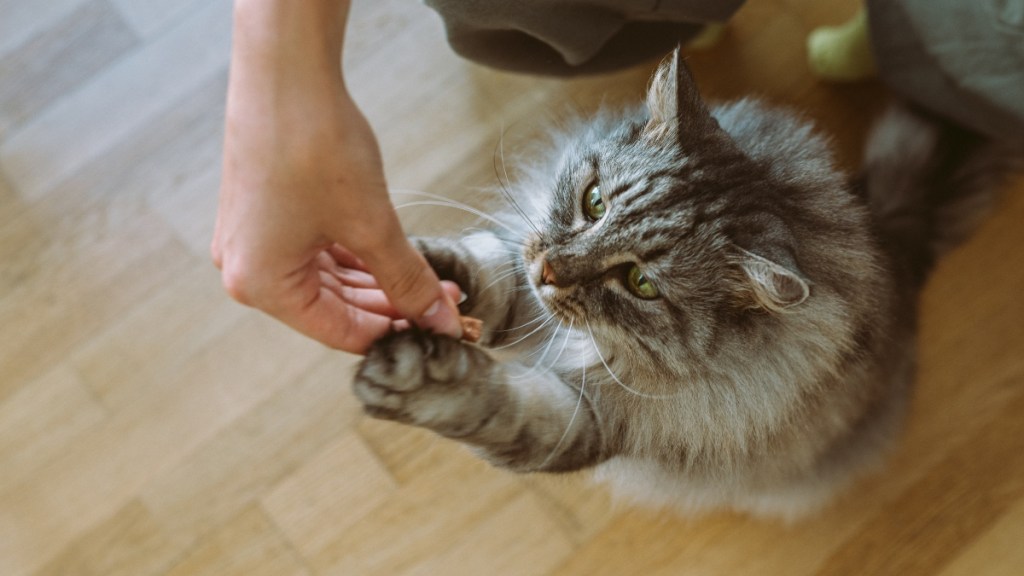
Treating your cat with the right “human foods” every so often can be beneficial, but it’s important not to offer too much in addition to their meals. “Any treat or supplemental food adds to your cat’s daily caloric intake and needs to be counted as part of their regular diet,” he explains. “If you are feeding 100% of their diet from their cat food and then giving treats you are most likely over feeding, which can lead to weight issues and health concerns.”
For that reason, you should subtract about 20% of your pet’s regular food for that day to avoid overfeeding. Weight gain caused by tasty “extras” is just as much of a possibility for cats as it is for humans.
Stay clear of toxic foods
You might already know that chocolate is dangerous for cats, but there are other items to stay clear of too. “Never give your cat alcohol, chocolate, tea, coffee, energy drinks, fat trimmings, raw eggs, onions or garlic,” says Dr. Turano. “Before feeding any type of 100% homemade or raw diet you should consult with your veterinarian or veterinary nutritionist.”
The last thing you want to do is give Whiskers a snack that she can’t digest or will make her sick! For more information on the foods potentially dangerous for pets, check out this list courtesy of the Humane Society of the United States.
Knowing the best human foods for kitties to eat is key to ensure she stays healthy. Plus offering up new tidbits in addition to her usual kibble means she’ll get to enjoy a varied diet!
For more advice on caring for your cat, keep reading!
Orange Cat Behavior: Vets Explain the Quirks That Make These Colorful Kitties So Special
Why Do Cats Like Shoes So Much? Vets Reveal the Reason for Their Quirky Obsession
Why Do Cats Loaf? Vet Experts Reveal the Sweet Reason Behind This Cute Behavior







